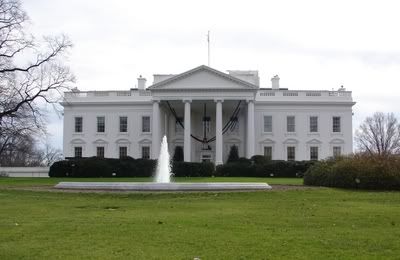This administration should, especially since we have been dumping money in some of these banks like crazy and they STILL are doing what they want to do with our money with no repercussions in sight.
The administration has decided to reveal some sensitive details of the stress tests now being completed after concluding that keeping many of the findings secret could send investors fleeing from financial institutions rumored to be weakest.
While all of the banks are expected to pass the tests, some are expected to be graded more highly than others. Officials have deliberately left murky just how much they intend to reveal — or to encourage the banks to reveal — about how well they would weather difficult economic conditions over the next two years.
As a result, indicating which banks are most vulnerable still runs some risk of doing what officials hope to avoid.
The decision on handling the stress tests underscores the delicate balancing act by the government, which has spent hundreds of billions to stabilize banks. Despite some signs of improvement in the financial system, many economists remain concerned that banks are still weighed down with toxic assets stemming from the housing downturn.
Until now, the Treasury De-partment has simply said that it will reveal the amounts of any new infusions of capital into banks that regulators judge to be at risk if the economic downturn is prolonged or the economy takes a further dive.
The administration’s hand may have been forced in part by the investment firm Goldman Sachs, which successfully sold $5 billion in new stock on Tuesday and declared that it would use the proceeds and other private capital to repay the $10 billion it accepted from the government in October.
That money came from the Troubled Asset Relief Program, or TARP, and Goldman’s action was seen as a way of predisclosing to the markets the company’s confidence that it would pass its stress test with flying colors.
Goldman’s action has put pressure on other financial institutions to do the same or risk being judged in far worse shape by investors. The administration feared that details on healthier banks would inevitably leak out, leaving weaker banks exposed to speculation and damaging market rumors, possibly making any further bailouts more costly.
The Goldman move also puts pressure on the administration to decide what conditions will apply to institutions that return their bailout funds. It is unclear if Goldman, for example, will continue to be allowed to benefit from an indirect subsidy effectively worth billions of dollars from a federal government guarantee on its debt, a program the Federal Deposit Insurance Corporation adopted last fall when the credit markets froze and it was virtually impossible for companies to raise cash. In ordinary times, regulators do not reveal the results of bank exams or disclose the names of troubled banks for fear of instigating bank runs or market stampedes out of a stock. But as top officials at the Treasury and the Federal Reserve Bank focused on the intensity with which the markets would look for signals about the nation’s biggest banks at the conclusion of the stress tests, the administration reconsidered its earlier decision to say little. read more here....
Home Page














